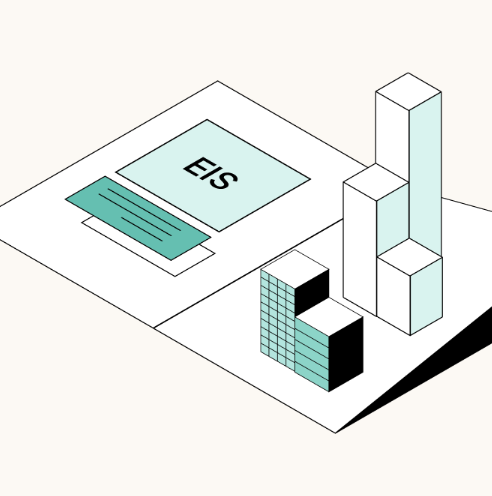
EIS vs VCT: Which One Is Right for Your Investment Strategy?
When seeking to invest in high-growth small and medium-sized enterprises (SMEs), investors often turn to two popular options in the UK: the Enterprise Investment Scheme (EIS) and Venture Capital Trusts (VCTs). Both options provide a way to support the UK’s dynamic SME sector while offering significant tax incentives, but they each come with unique features that make them more suitable for different investment goals.
The popularity of both the EIS and VCTs has grown rapidly in recent years, with £1.6 billion raised by the EIS and £668 million by VCTs in the 2020/21 tax year. The pressures of rising taxes and reduced pension allowances have led many investors to explore these tax-efficient options as a way to safeguard their capital while making meaningful contributions to the economy.
A Look at the EIS and VCT Origins
The EIS was established in 1994 to boost the UK’s SME sector by providing funding to early-stage companies. Over the years, the scheme has supported over 27,000 businesses and attracted more than £18 billion in investments. It encourages private investors to provide growth capital in exchange for an equity stake, alongside generous tax breaks, including 30% income tax relief.
VCTs, launched in 1995, aim to bridge the funding gap between SMEs and traditional lenders. These listed funds pool money from multiple investors to acquire stakes in qualifying early-stage companies. If the portfolio performs well, the VCT’s share price rises, providing investors with solid returns and a diversified investment. Since their introduction, VCTs have attracted more than £8.1 billion in investment.
Both the EIS and VCTs have played a vital role in the growth of UK SMEs, and their tax-efficient investment benefits are increasingly appealing to investors. With pension contribution limits shrinking—from £255,000 to £40,000 for most people—investors are increasingly turning to the EIS and VCTs to grow their wealth while enjoying significant tax advantages.
Key Differences Between EIS and VCTs
While both the EIS and VCTs are designed to stimulate the SME sector and offer similar tax incentives, they differ significantly in their structure and investment approach.
- Investment Structure:
VCTs are publicly listed funds that typically invest in 30 to 70 different companies. Their portfolio is diversified, which makes them less risky than individual EIS investments, but potentially less lucrative if a particular company within the VCT performs exceptionally well. On the other hand, EIS investments are made directly in individual companies. This structure gives investors more control and potentially higher returns, though it comes with more concentrated risk. - Liquidity and Holding Period:
VCTs are publicly traded, which generally makes them more liquid than EIS investments. However, to benefit from tax reliefs, investors must hold their VCT shares for at least five years. While the five-year minimum holding period may seem long, the secondary market for VCT shares is often inactive, making it harder to sell before the holding period ends. EIS investments require a shorter holding period of just three years before qualifying for tax reliefs, and exits are more flexible, typically through a company sale or IPO. However, liquidity is lower compared to VCTs. - Tax Reliefs:
The tax benefits for both EIS and VCTs are generous, but they differ in their specifics. EIS Tax Benefits:- 30% income tax relief on investments up to £1 million (£2 million for knowledge-intensive companies)
- Capital gains tax (CGT) exemption on EIS shares after three years
- Capital gains deferral: If you use a capital gain from another asset to invest in an EIS-eligible company, you can defer the CGT on that gain
- Inheritance tax-free after holding the investment for two years
- Loss relief: If your EIS investment results in a loss, it can be offset against your income or CGT
- 30% income tax relief on investments up to £200,000 per year (for new shares)
- No capital gains tax on the sale of VCT shares, as long as the company maintains its VCT status
- VCT shares must be held for at least five years to retain income tax relief
Which is Best for Your Portfolio?
Both EIS and VCTs are powerful tools for tax-efficient investing, but which one is right for your portfolio depends on your investment goals, risk tolerance, and the role you want your investment to play in your overall strategy.
If you’re looking for steady, incremental returns to supplement your income—particularly during retirement—VCTs could be more suited to your needs. With their regular dividend payments and diversified portfolios, VCTs provide an attractive option for investors seeking gradual growth.
For those focused on higher returns and willing to take on more risk, EIS investments may be a better choice. EIS investments often target companies with high growth potential, and while returns are typically realized upon exit, the potential for substantial growth makes them appealing for those looking to grow their capital in the long term.
Additionally, the extra tax reliefs offered by the EIS, such as the deferral of capital gains tax and the ability to offset losses, make it particularly attractive for investors with a higher tolerance for risk who are looking to maximize the tax efficiency of their portfolio.
Final Thoughts
Both EIS and VCTs offer unique benefits to investors, making them highly effective tools for tax-efficient investment. Whether you opt for the liquidity and income potential of VCTs or the high-growth opportunities offered by EIS, both options allow you to support UK SMEs while enjoying significant tax advantages.
If you’re looking to diversify your portfolio with high-growth, innovative companies, both the EIS and VCTs can play an important role in helping you achieve your financial goals. Keep in mind that both options come with a degree of risk, but the potential rewards—along with the generous tax reliefs—make them attractive choices for many experienced investors.